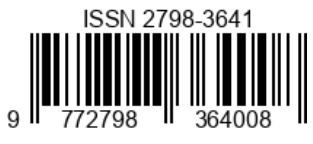DIGITAL AGE TOURISM: SOCIAL MEDIA'S ROLE IN HOSPITALITY AND INTERCULTURAL COMMUNICATION
Keywords:
social media, tourism transformation, hospitality, coastal areas, Pangandaran beachAbstract
The growth of mobile devices and social media has greatly affected the tourism business, as well as hospitality and cross-cultural relations. This research studies the use of social media in transforming the tourism practices in Pangandaran focusing on ecotourism and river rafting in Citumang. Using the qualitative method, data were established by purposive sampling of three informants: tourism managers, tour guides and tourists. Through in-depth interviews, participatory observation, and social media posting and promotional materials documentation opened broad perspectives. The research results suggest that social media such as Instagram and Facebook are effective in marketing the Pangandaran’s ecotourism products. There are tour guides such as Kang Wahyu who use the site to tell a story in cultures and interact with tourists at the same time to enhance their experience and integration of cultures. However, limitations in these technologies’ full potential include poor internet coverage and low levels of digital skills among the local tourism providers. In conclusion, the results of the study indicate that combining social media with better digital infrastructure and participation of the community could improve the social and environmental aspects of ecological tourism.
References
Ahmed, Y. A., Ahmad, M. N., Ahmad, N., & Zakaria, N. H. (2019). Social media for knowledge-sharing: A systematic literature review. Telematics and Informatics, 37, 72–112. https://doi.org/10.1016/j.tele.2018.01.015
Arora, A., Bansal, S., Kandpal, C., Aswani, R., & Dwivedi, Y. (2019). Measuring social media influencer index- insights from facebook, Twitter and Instagram. Journal of Retailing and Consumer Services, 49(February), 86–101. https://doi.org/https://doi.org/10.1016/j.jretconser.2019.03.012
Bajari, A. (2015). Metode penelitian komunikasi; Prosedur, tren dan etika (2nd ed.). Simbiosa Rekatama.
Bassano, C., Barile, S., Piciocchi, P., Spohrer, J. C., Iandolo, F., & Fisk, R. (2019). Storytelling about places : Tourism marketing in the digital age. Cities, 87(June 2018), 10–20. https://doi.org/10.1016/j.cities.2018.12.025
Denić, N., Petković, D., Vujović, V., Spasić, B., & Vujičić, I. (2018). A survey of internet marketing by small and medium-sized enterprises for placing wine on the market. Physica A: Statistical Mechanics and Its Applications, 506, 718–727. https://doi.org/10.1016/j.physa.2018.04.095
Galati, A., Crescimanno, M., Tinervia, S., & Fagnani, F. (2017). Social media as a strategic marketing tool in the Sicilian wine industry: Evidence from Facebook. Wine Economics and Policy, 6(1), 40–47. https://doi.org/10.1016/j.wep.2017.03.003
Hafiar, H., Subekti, P., & Nugraha, A. R. (2019). Internet utilization by the students with visual impairment disabilities. International Journal of Emerging Technologies in Learning, 14(10), 200–207. https://doi.org/10.3991/ijet.v14i10.10057
Hutter, K., & Hoffmann, S. (2014). Surprise, Surprise. Ambient Media as Promotion Tool for Retailers. Journal of Retailing, 90(1), 93–110. https://doi.org/10.1016/j.jretai.2013.08.001
Kapera, I. (2018). Sustainable tourism development efforts by local governments in Poland. Sustainable Cities and Society, 40, 581–588. https://doi.org/10.1016/j.scs.2018.05.001
Loukis, E., Charalabidis, Y., & Androutsopoulou, A. (2017). Promoting open innovation in the public sector through social media monitoring. Government Information Quarterly, 34(1), 99–109. https://doi.org/10.1016/j.giq.2016.09.004
Moleong, L. J. (2000). Metode penelitian kualitatif. PT. Remaja Rosda Karya.
Müller, J. M., Pommeranz, B., Weisser, J., & Voigt, K. I. (2018). Digital, Social Media, and Mobile Marketing in industrial buying: Still in need of customer segmentation? Empirical evidence from Poland and Germany. Industrial Marketing Management, 73(January), 70–83. https://doi.org/10.1016/j.indmarman.2018.01.033
Okumus, F., van Niekerk, M., Koseoglu, M. A., & Bilgihan, A. (2018). Interdisciplinary research in tourism. Tourism Management, 69(April), 540–549. https://doi.org/10.1016/j.tourman.2018.05.016
Polus, R. C., & Bidder, C. (2016). Volunteer Tourists’ Motivation and Satisfaction: A Case of Batu Puteh Village Kinabatangan Borneo. Procedia - Social and Behavioral Sciences, 224(August 2015), 308–316. https://doi.org/10.1016/j.sbspro.2016.05.490
Rakhmat, J. (2017). Metode penelitian komunikasi. Simbiosa Rekatama.
Reza, F. (2016). Strategi promosi penjualan. Jurnal Kajian Komunikasi, 4(1), 64–74.
Salehan, M., Kim, D. J., & Lee, J. N. (2018). Are there any relationships between technology and cultural values? A country-level trend study of the association between information communication technology and cultural values. Information and Management, 55(6), 725–745. https://doi.org/10.1016/j.im.2018.03.003
Semerádová, T., & Vávrová, J. N. (2016). Using a systemic approach to assess Internet marketing communication within hospitality industry. Tourism Management Perspectives, 20, 276–289. https://doi.org/10.1016/j.tmp.2016.09.007
Susanty, A., Nugroho, S., & Adyan. (2015). Optimasi Pengembangan Kawasan Wisata Di Semarang Dengan Menggunakan Metodeanalytical Hierarchy Process , Analisis Swot , Dan Multi-Attribute Utility Theory. Jurnal Teknik Industri, X(2), 77–84. https://doi.org/10.1029/2008GL037081
Tiago, F., Gil, A., Stemberger, S., & Borges-tiago, T. (2020). Digital sustainability communication in tourism. Suma de Negocios. https://doi.org/10.1016/j.jik.2019.12.002
Tiago, M. T. P. M. B., & Veríssimo, J. M. C. (2014). Digital marketing and social media: Why bother? Business Horizons, 57(6), 703–708. https://doi.org/10.1016/j.bushor.2014.07.002
Vajčnerová, I., Žiaran, P., Ryglová, K., & Andráško, I. (2014). Quality Management of the Tourist Destination in the Context of Visitors’ Satisfaction. Procedia Economics and Finance, 12(March), 718–724. https://doi.org/10.1016/s2212-5671(14)00398-0
Watie, E. D. S. (2017). Komunikasi dan Media Sosial (Communications and Social Media). Jurnal The Messenger, 3(2), 69. https://doi.org/10.26623/themessenger.v3i2.270
Yusup, P. M., Damayani, N. A., Subekti, P., Sugiana, D., & Kuswarno, E. (2019). Dimensions of health information behavior of the poor affected by annual flooding in East Bandung region, Indonesia. Library Philosophy and Practice, 2019.
Zhao, X., Xie, C., Huang, L., Wang, Y., & Han, T. (2023). How digitalization promotes the sustainable integration of culture and tourism for economic recovery. Economic Analysis and Policy, 77, 988–1000. https://doi.org/10.1016/j.eap.2023.01.005















